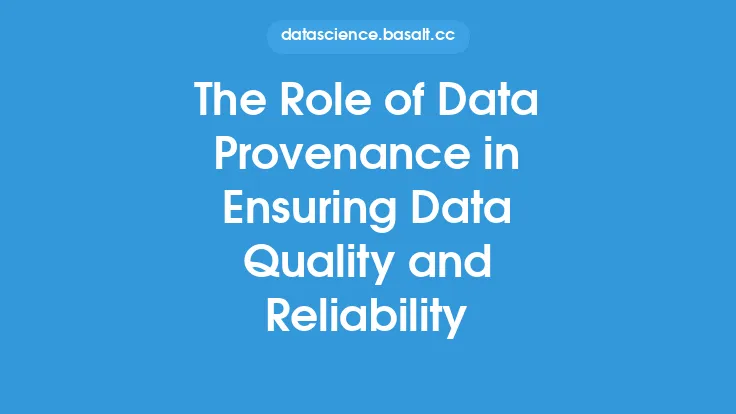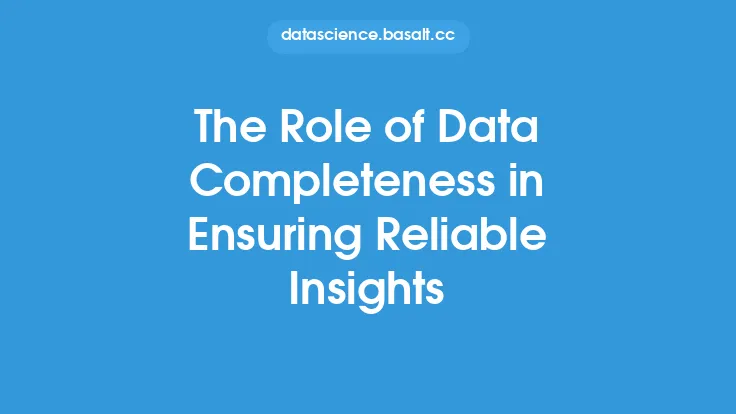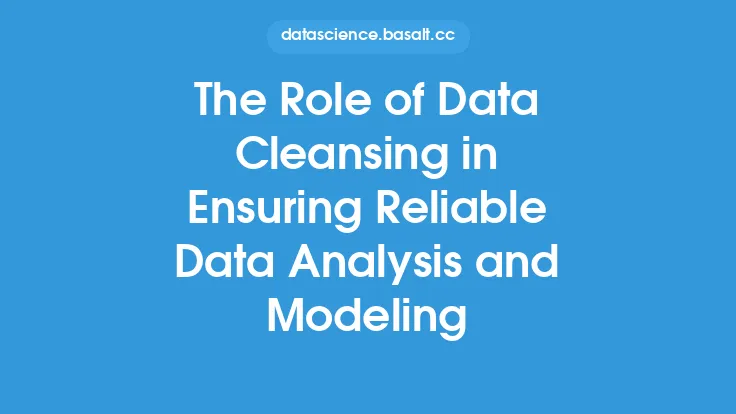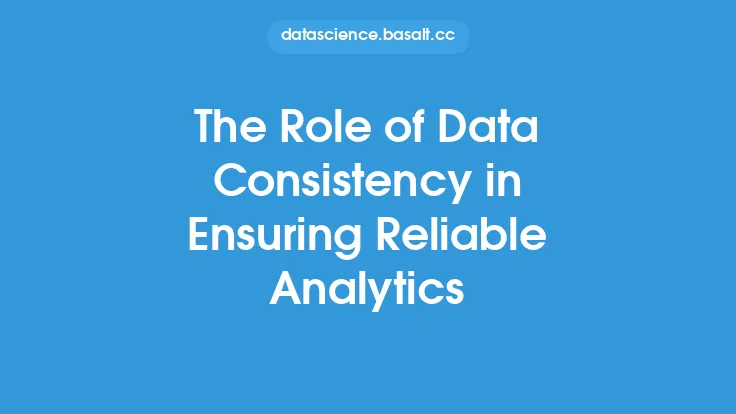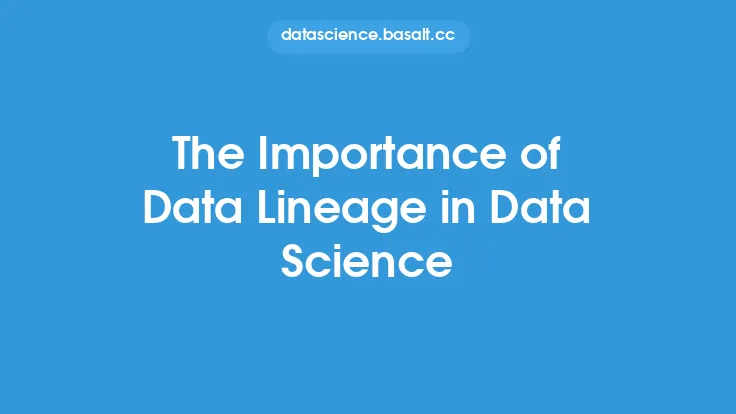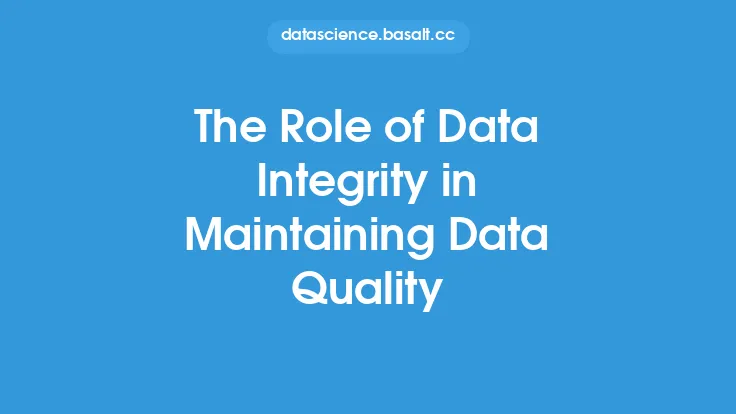Data reliability is a critical aspect of any organization's data management strategy. With the increasing volume and complexity of data, ensuring that data is accurate, complete, and consistent is a daunting task. One key concept that plays a vital role in ensuring data reliability is data lineage. Data lineage refers to the process of tracking the origin, movement, and transformation of data throughout its entire lifecycle. In this article, we will delve into the role of data lineage in ensuring data reliability and explore its importance in maintaining high-quality data.
What is Data Lineage?
Data lineage is the process of mapping the data flow from its source to its final destination, including all the transformations, aggregations, and calculations that occur along the way. It involves tracking the data's origin, movement, and changes, as well as the systems, processes, and people involved in handling the data. Data lineage provides a complete and accurate picture of the data's history, allowing organizations to understand how the data was created, processed, and transformed.
Benefits of Data Lineage in Ensuring Data Reliability
Data lineage offers several benefits that contribute to ensuring data reliability. Some of the key benefits include:
- Improved data transparency: Data lineage provides a clear understanding of the data's origin, movement, and transformation, making it easier to identify errors, inconsistencies, and anomalies.
- Enhanced data quality: By tracking the data's history, organizations can identify and address data quality issues, such as data duplication, inconsistencies, and inaccuracies.
- Increased data trust: Data lineage helps to establish trust in the data by providing a clear understanding of how the data was created, processed, and transformed.
- Better data governance: Data lineage enables organizations to implement effective data governance policies and procedures, ensuring that data is handled, stored, and processed in a secure and compliant manner.
Technical Aspects of Data Lineage
From a technical perspective, data lineage involves several key components, including:
- Data mapping: Creating a visual representation of the data flow, including the sources, transformations, and destinations of the data.
- Metadata management: Collecting, storing, and managing metadata, such as data definitions, data formats, and data relationships.
- Data transformation tracking: Tracking the transformations, aggregations, and calculations that occur as the data moves through the system.
- Data quality monitoring: Continuously monitoring the data for errors, inconsistencies, and anomalies, and taking corrective action when necessary.
Data Lineage Tools and Technologies
Several tools and technologies are available to support data lineage, including:
- Data integration platforms: Platforms that provide data integration, data transformation, and data quality capabilities, such as Informatica, Talend, and Microsoft SQL Server Integration Services.
- Data governance platforms: Platforms that provide data governance, data quality, and data security capabilities, such as Collibra, IBM InfoSphere, and Oracle Enterprise Data Governance.
- Data lineage software: Specialized software that provides data lineage capabilities, such as Trifacta, Alation, and Data360.
- Big data platforms: Platforms that provide big data processing, storage, and analytics capabilities, such as Hadoop, Spark, and NoSQL databases.
Implementing Data Lineage in Your Organization
Implementing data lineage in your organization requires a structured approach, including:
- Define data lineage requirements: Identify the data sources, transformations, and destinations that need to be tracked, and define the metadata requirements.
- Select data lineage tools and technologies: Choose the tools and technologies that best meet your organization's needs, and ensure that they are integrated with existing systems and processes.
- Develop a data lineage strategy: Create a strategy that outlines the data lineage approach, including the data mapping, metadata management, and data transformation tracking.
- Implement data lineage: Implement the data lineage strategy, and ensure that it is integrated with existing data governance policies and procedures.
Best Practices for Data Lineage
Several best practices can help ensure the success of data lineage initiatives, including:
- Start small: Begin with a small pilot project, and gradually expand to other areas of the organization.
- Focus on business outcomes: Align data lineage initiatives with business outcomes, such as improved data quality, increased data trust, and better decision-making.
- Collaborate with stakeholders: Involve stakeholders from across the organization, including data owners, data stewards, and business users.
- Continuously monitor and improve: Continuously monitor the data lineage process, and make improvements as needed to ensure that it remains effective and efficient.
Conclusion
Data lineage plays a critical role in ensuring data reliability, and its importance cannot be overstated. By tracking the origin, movement, and transformation of data, organizations can improve data transparency, enhance data quality, increase data trust, and implement effective data governance policies and procedures. As data continues to grow in volume and complexity, data lineage will become an increasingly important aspect of any organization's data management strategy. By understanding the benefits, technical aspects, and best practices of data lineage, organizations can ensure that their data is reliable, accurate, and trustworthy, and that it supports informed decision-making and business success.
